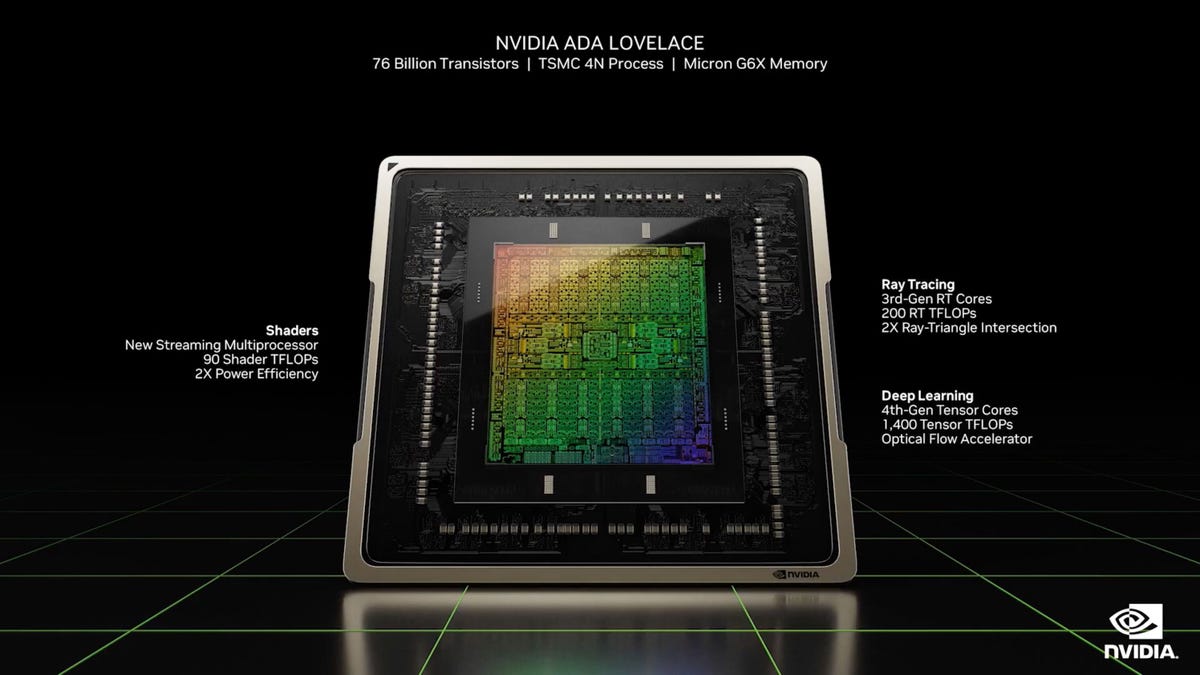What is happening
Nvidia has announced its flagship next-generation gaming graphics cards, the RTX 4090 and RTX 4080.
Why it matters
Nvidia-based graphics cards are still the most popular on the market, and all the new technologies that speed them up significantly are remarkable.
Nvidia
goodbye, Ampere; hi Ada Lovelace: Nvidia unveiled its new generation of GeForce graphics cards at its annual Graphics Technology Conference, marking the company’s two-year upgrade to its GPU architecture. Nvidia claims that the flagship RTX 4090 can perform up to 2x better in raster-heavy games and up to 4x faster in fully ray-traced games than the previous flagship RTX 3090 Ti, while the RTX 4080 should be up to 3x faster than RTX 3080 Ti. The RTX 4090 is scheduled to ship on October 12th at $1599, while the RTX 4080 is coming in November at $899; the latter will be available in two versions, 16GB and 12GB.
In addition to Nvidia’s Founders Edition cards, versions using the GPU will be available from the usual Nvidia partners (except for EVGA), including Asus, Gigabyte, MSI, PNY and Zotac. The RTX 3080, 3070, and 3060 will remain in the lineup, and I’d look for big discounts on them during the holiday shopping season.
Specifications
|
RTX 4090 |
RTX 4080 (16GB) |
RTX 4080 (12GB) |
|
|
memory |
24GB GDDR6X/384 bit |
16GB GDDR6X/256 bit |
12GB GDDR6X/192 bit |
|
CUDA cores |
16,384 |
9,728 |
7,680 |
|
Boost Clock (GHz) |
2.52 |
2.51 |
2.61 |
|
PCIe Gen |
4 |
4 |
4 |
|
Map width |
3 slots |
3 slots |
It varies |
|
Power Supply/PSU Requirement |
450w/850w |
320w/700w |
285w/700w |
|
Availability |
October 12 |
November |
November |
|
Price |
It starts at $1,599 |
It starts at $1,199 |
It starts at $899 |
When the RTX 4090 ships, there will be some free DLC for proof of beauty and performance: Portal with RTX and a new Ray Tracing: Overdrive mode for Cyberpunk 2077. There will also be a home-made real-time rendering app, Nvidia Racer RTX.

Nvidia
The chips’ Ada Lovelace architecture — it’s not clear whether it will be called “Ada,” which is shorter, or “Lovelace,” in keeping with tradition — introduces seven hardware upgrades, some of which are derived from its data center sibling or sister, Hopper:
- Built on a 4nm process. Optimally, smaller processes allow more silicon to be crammed into the same space, with (usually) improved power and efficiency.
- Third-generation ray tracing cores double the performance of calculations about how rays interact with the polygons that define the image, which Nvidia says increases the speed of floating-point operations by up to 2.8x.
- 4th generation Tensor cores that drive Nvidia’s DLSS scaling software allow DLSS to move from individual pixel generation to more efficient frame-based algorithms for its new DLSS 3. Over 35 games and applications registered to include DLSS 3 from October.
- Updated streaming multiprocessors provide more than 2x the performance of Ampere SM.
- Shader Execution Reordering optimizes the transmission of ray-traced data to SMs for rasterization, which the company claims increases shader performance by up to 2x and frame rates by up to 25%.
- Optical Flow Accelerator uses pixel motion data to DLSS to generate new frames; Nvidia says this improves performance in CPU-intensive games (complex simulation games, such as Microsoft Flight Simulator).
- Dual AV1 encoders should improve the quality of on-the-go video processing for streamers. OBS is expected to release a new version of its streaming software in October, and Discord is slated to support it later this year.
To go along with the new processing capabilities, Nvidia introduced some new software algorithms to improve performance as well.
- Opacity Micro-Maps create and save masks to world objects in advance, so they don’t need to be created again.
- Displaced Micro-Meshes are meshes of smaller triangles that the new RT cores can process without needing to be stored or pre-processed somewhere else; they improve speed (up to 10x, for Nvidia) and require up to 20x less video memory in certain cases.












/cdn.vox-cdn.com/uploads/chorus_asset/file/24347780/STK095_Microsoft_04.jpg?resize=120%2C86&ssl=1)



